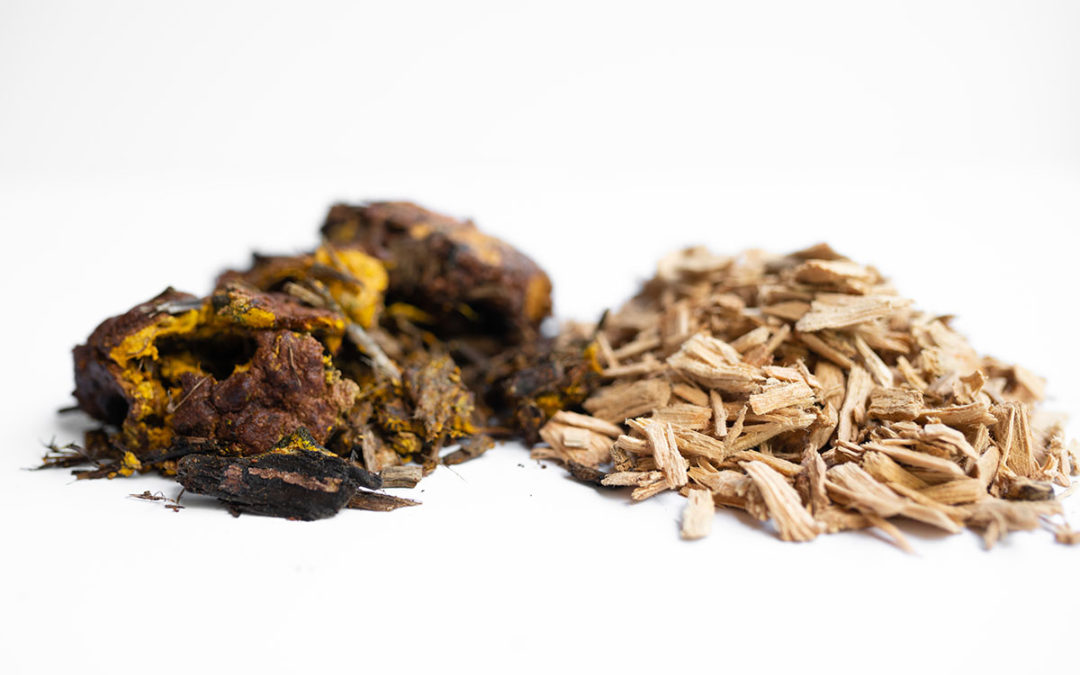Have you received complaints from parents or community members about mold in your playground’s wood chips? Decomposing wood chips is a situation many playgrounds encounter when it doesn’t have suitable and high-quality engineered wood fiber surfacing. It can be a serious problem for many reasons.
- Mold in the surfacing gives the impression of a poorly maintained or unclean playground
- Composting of the engineered wood fiber decreases surfacing attenuation meaning the surfacing doesn’t meet fall height requirements and is less safe
- Depending on the type of mold, the wood chips can be toxic
- Parents, children, and community members can become afraid or wary of the playground
For parks and municipalities, playgrounds with decomposing wood chips can spoil the park’s aesthetic and cause concern among your community. At schools, mold in wood chips can increase liability risks and cause staff and parents to worry about the health and safety of the playground. Mold is not a welcomed visitor at playgrounds yet it tends to result from common conditions.
Why do wood chips decompose?
Oftentimes, the mold found in wood chips are referred to as dog vomit mold. That’s how unpleasant the surfacing can look. Below is an example of mold in wood chips (left) compared to quality engineered wood fiber surfacing (right).
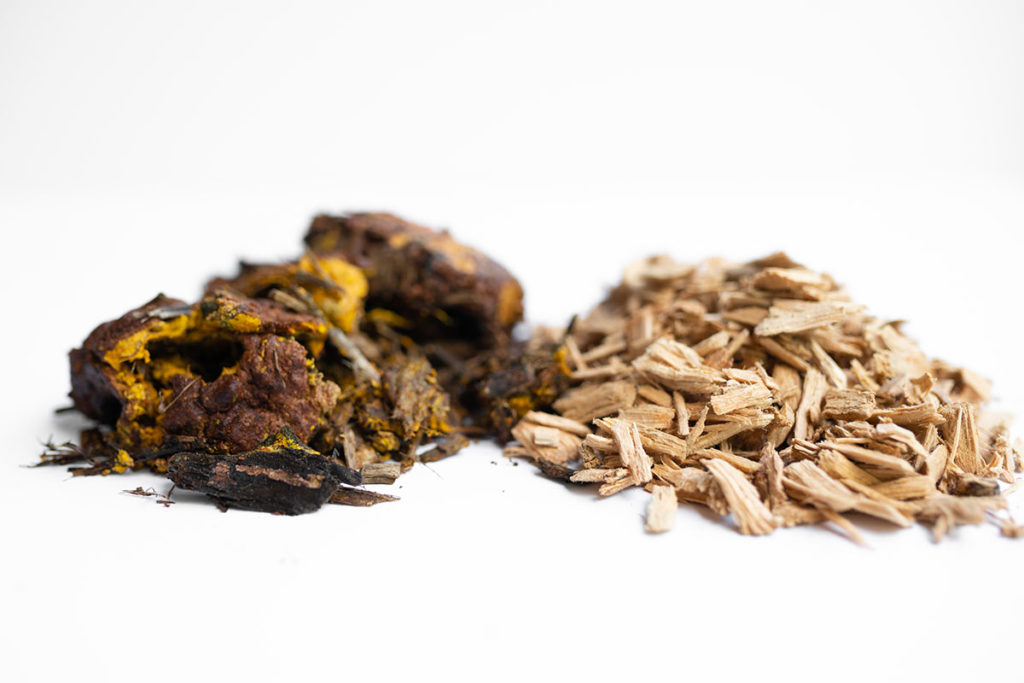
While there are varying degrees and types of mold, they are common reasons that the mold exists.
- If the vendor uses the whole tree including the bark, leaves, dirt, etc. during the manufacturing process, it can transport existing mold to the wood chips. Also by using all the tree parts, rather than using only the live stem wood, it makes the wood chips significantly more susceptible to mold and decay.
- Using certain wood can increase the likelihood of mold. Some trees when processed are naturally more prone to decomposition increasing the risk of mold in wood chips.
- Poor playground drainage that causes water pooling will increase the moisture and increase the risk of mold.
- Hot and humid weather will also increase the surfacing moisture creating an ideal environment for dog vomit fungus in mulch to grow.
How long do wood chips take to mold?
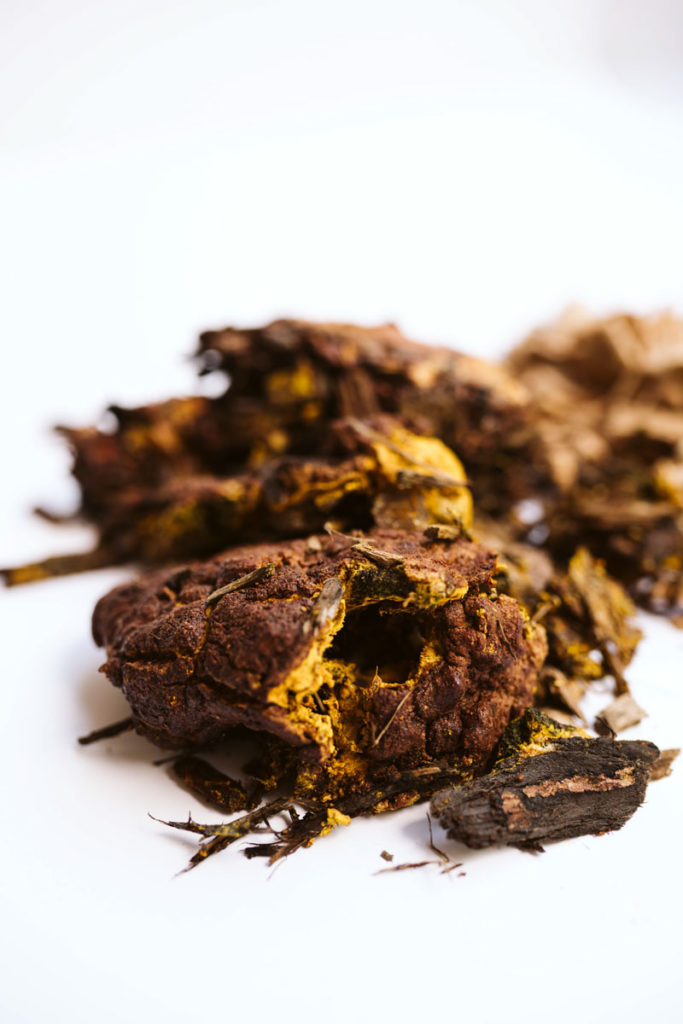
As with all situations, it depends on the conditions above. Using an improper manufacturing process or material, mold in wood chips can be apparent right off the truck; you could be delivered already moldy wood chips. For other conditions, decomposing wood chips can happen within three to four years. That means your investment in surfacing will only get you a few years, if that, causing you to replace your wood chips sooner than expected.
Although, mold in wood chips isn’t an inevitable circumstance. It can easily be avoided by using a surfacing material that follows a strict manufacturing process, uses long-lasting material, and will withstand the environment.
Remove the Risk of Mold in Wood Chips
To remove the likelihood of moldy wood chips, it is critical to find a vendor that provides wood chips designed to withstand playground environments. From year-round weather conditions to clean delivery, every aspect of the surfacing needs to be specifically planned. To understand what to look for, SaetyFirst’s Nature’sPlus surfacing takes into consideration the common reasons for mold in wood chips and we developed our process in accordance with these precautions and best practices.
A playground with moldy and decomposing wood chips:
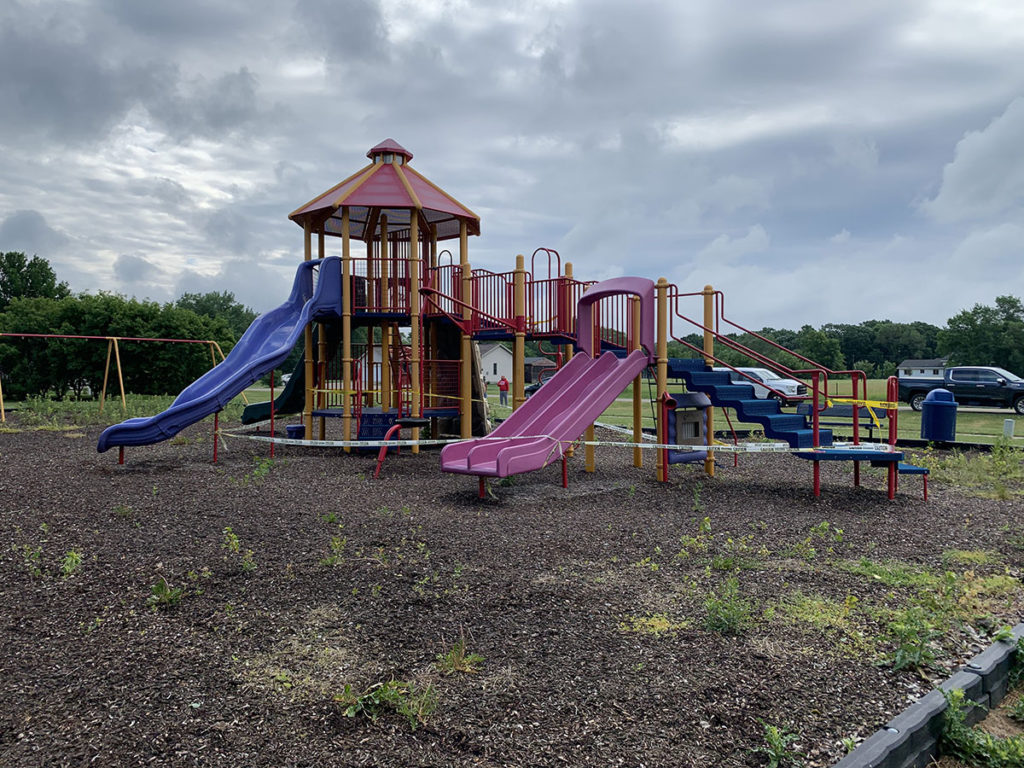
A playground with renewed surfacing using engineered wood fiber:
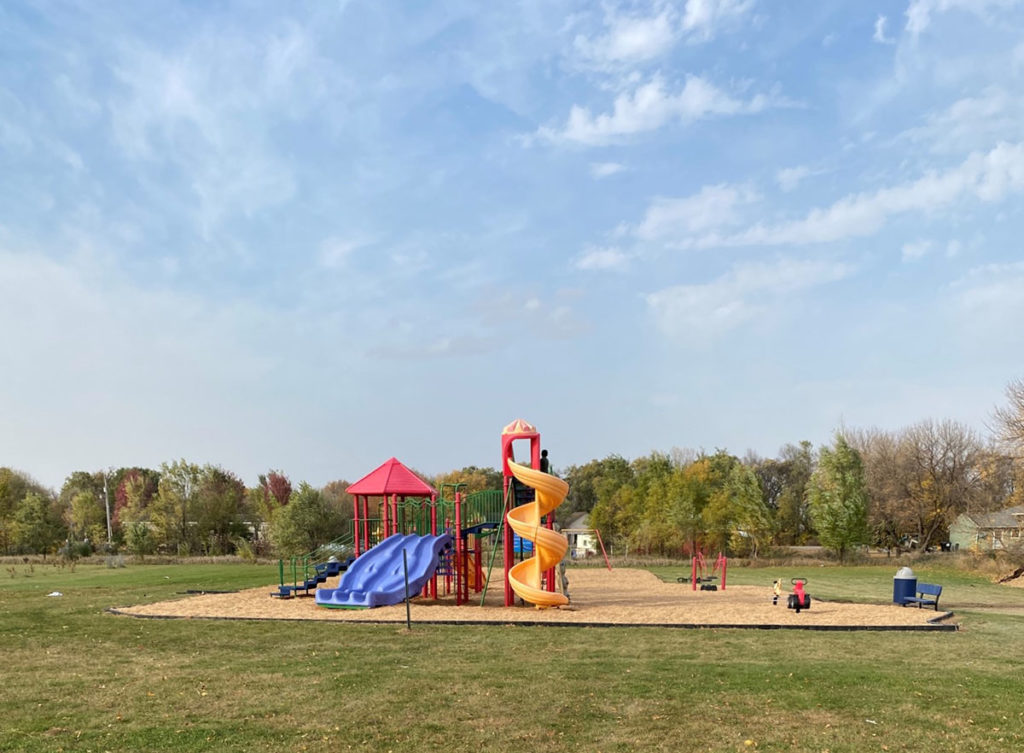
Nature’sPlus is an engineered wood fiber that was uniquely designed to provide a long-lasting and durable playground surfacing. It follows a meticulous manufacturing process and uses a tested and top-quality material in order to provide park and school playgrounds a reliable, safe, and mold-resistant surfacing option.
Nature’sPlus Manufacturing Process
When Nature’sPlus is produced, all the bark, twigs, leaves, dirt, etc. is removed, leaving behind only the live stem wood. This is the only section of the tree that is then manufactured into wood chips. The other scraps of the tree are never used when manufacturing. By using only the live stem wood, it eliminates potential contamination because the wood fiber uses a completely controlled material. Second, by using the live stem wood, it gets the most out of the tree’s natural capabilities, as described below.
Nature’sPlus Material: Tamarack Tree
The Tamarack tree is a locally grown, Minnesota resource that is naturally resistant to mold and decay. That’s right – Nature’sPlus is made only from a material that has the natural capability to not mold. In fact, Tamarack trees are traditionally used for making boats. So not only has SafetyFirst tested its capabilities, it is historically proven to tolerate moisture and water without decay.
Furthermore, because of the Tamarack tree’s characteristics combined with the manufacturing process, it can withstand high humidity and heat without decomposing. While other wood chips would mold in such environments, Nature’sPlus engineered wood fiber is able to resist molding and provide a beautiful, safe, and enjoyable playground for 10+ years. To compare, other surfacing has a lifespan of just a few years before mold in wood chips appear, but Nature’sPlus will last over 10 years without decomposing.
How to Deal with Mold in Playground Wood Chips
The solution for mold in playground wood chips is to work with a vendor that provides high-quality and playground-ready engineered wood fiber. When sourcing a playground surfacing vendor make sure to inquire about these two things before using their product:
- What is their manufacturing process? Do they use the full tree or only the live stem wood?
- What type of tree do they use to make the wood chips? Is the wood susceptible or resistant to mold?
At SafetyFirst, our uniquely engineered Nature’sPlus surfacing has been used in many playgrounds to upgrade surfacing and provide a long-lasting solution. In addition to our attentive maintenance services, we ensure your playground is a welcoming environment for children, students, parents, and community members. Please contact our team to learn about your surfacing options!

